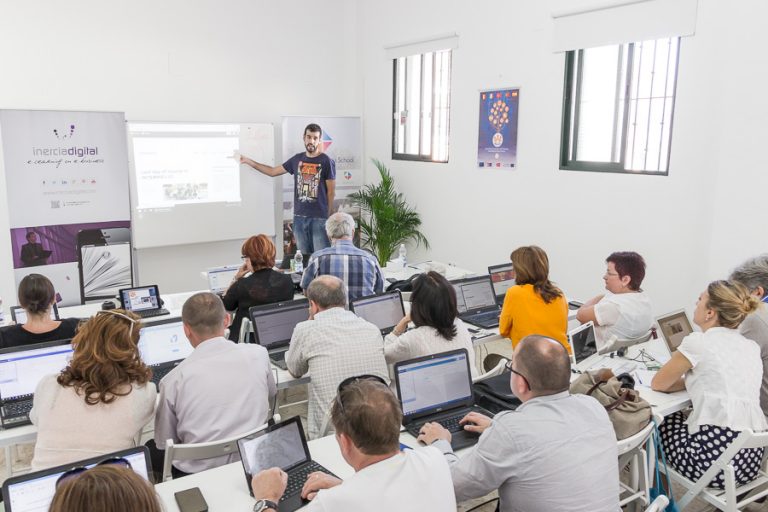Las ventajas de incorporar marcadores sociales en el aula.
 Son múltiples. Permiten acumular los recursos de aprendizaje que han utilizado los estudiantes en cada curso académico de manera organizada; estimulan la busca de nuevas referencias bibliográficas para poder ampliar los temas trabajados al aula; permiten la colaboración y el trabajo en equipo, puesto que los recursos seleccionados se pueden compartir fácilmente; hacen posible el acceso a las referencias bibliográficas desde cualquier lugar y punto de acceso a la red; permiten un acceso seguro a la información guardada, e introducen un elemento de socialización, puesto que es posible etiquetar y guardar los recursos consultados como públicos, de forma que cualquier usuario los puede consultar (de este modo, se puede saber quién usa los mismos enlaces y localizar usuarios que compartan los mismos intereses). Además, hacen posible localizar fácilmente los recursos elegidos por otros usuarios y reutilizarlos, gracias al uso de las etiquetas (una misma referencia puede ser etiquetada por más de una persona, por lo que la referencia se enriquece con las etiquetas que aportan cada uno de los usuarios que lo han etiquetado), y ofrecen la posibilidad de sindicar los contenidos, una manera rápida y cómoda de seguir la evolución de un tema de interés.
Son múltiples. Permiten acumular los recursos de aprendizaje que han utilizado los estudiantes en cada curso académico de manera organizada; estimulan la busca de nuevas referencias bibliográficas para poder ampliar los temas trabajados al aula; permiten la colaboración y el trabajo en equipo, puesto que los recursos seleccionados se pueden compartir fácilmente; hacen posible el acceso a las referencias bibliográficas desde cualquier lugar y punto de acceso a la red; permiten un acceso seguro a la información guardada, e introducen un elemento de socialización, puesto que es posible etiquetar y guardar los recursos consultados como públicos, de forma que cualquier usuario los puede consultar (de este modo, se puede saber quién usa los mismos enlaces y localizar usuarios que compartan los mismos intereses). Además, hacen posible localizar fácilmente los recursos elegidos por otros usuarios y reutilizarlos, gracias al uso de las etiquetas (una misma referencia puede ser etiquetada por más de una persona, por lo que la referencia se enriquece con las etiquetas que aportan cada uno de los usuarios que lo han etiquetado), y ofrecen la posibilidad de sindicar los contenidos, una manera rápida y cómoda de seguir la evolución de un tema de interés.
En conclusión, la introducción de herramientas de marcación social en el aula virtual de aprendizaje posibilita el reaprovechamiento de las referencias bibliográficas con las que trabajan los estudiantes en el aula de una manera sistemática y organizada, tarea que hasta ahora era difícil de plantear. Así mismo, permite sistematizar el proceso de busca y almacenamiento de la información consultada. Y, en última instancia, estimula la tarea de nueva consulta bibliográfica a medida que se van organizando y clasificando los recursos de aprendizaje.
Advantages of incorporating social bookmarks to the classrooms.
There are so many. They can gather the learning resources that are used by the students each academic year in an organized way; they stimulate the search of new bibliographic references to increase the work topics; they allow the collaboration and teamwork since the chosen resources can be easily shared. They make possible the access to the bibliographic references from any place and access point on the web. They allow a safe access to the kept information and introduce an element for nationalization since you can tag and keep the consulted resources as public, so each user can consult them (so it can be known who uses the same links and to locate those who share the same interest.) And apart from that, the chosen resources can be easily located and reused due to the use of the tags (the same reference can be tagged by more than one person, so the reference gets better with the tags) and they offer the possibility to organize the contents, a fast and comfortable way to follow the evolution of a topic of interest.
In conclusion, the introduction of the social bookmark tool in the virtual classroom of learning allows the reuse of the bibliographic references the students work with in the classroom in a systematic and organized way, task that was difficult to set before. So it allows to organize el searching process and the storage of the consulted information. And it motivates the task of a new bibliographic search while the learning resources are being organized and classified.
Jose Manuel Luna Huertas
Latest posts by Jose Manuel Luna Huertas (see all)
- Do you have an Erasmus + KA1 grant? - 02/06/2016
- Course multimedia content for e-learning project - 05/05/2016
- Course multimedia content for e-learning training project - 21/04/2016





1 respuesta
[…] Si quieres saber más sobre las ventajas de incorporar marcadores sociales en el aula haz click aquí […]